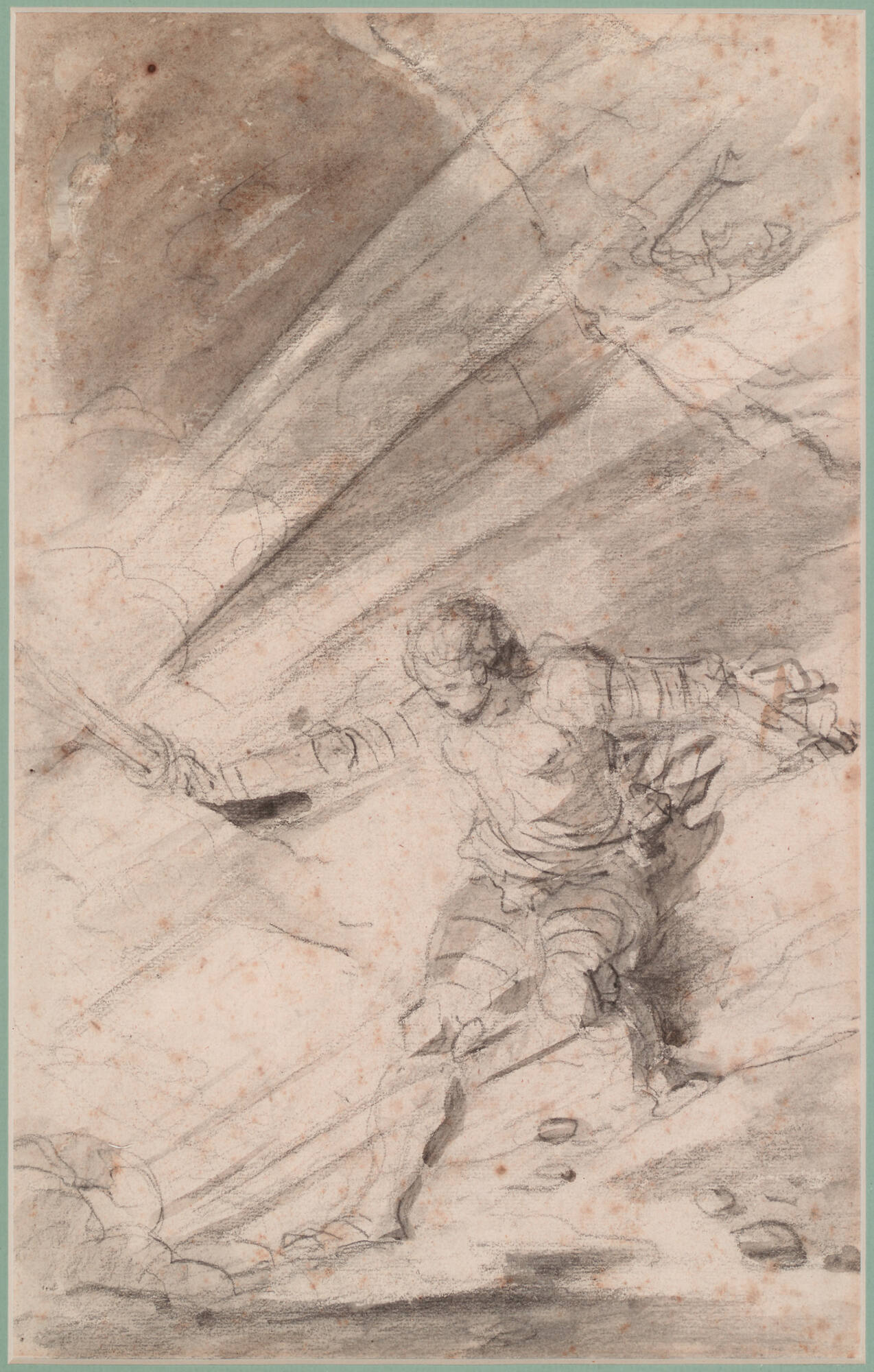
Object Details
Artist
Jean-Honoré Fragonard
Date
ca. 1780s
Medium
Black chalk with brown and gray wash
Dimensions
14 3/16 × 9 5/8 inches (36 × 24.4 cm)
Credit Line
Acquired through the generosity of Barbara B. Payne, Class of 1939; and Mr. and Mrs. L. William Kay II; supplemented by the Professor M. H. Abrams and Ruth Abrams Purchase Fund; the Warner L. Overton, Class of 1922, Endowment; the Ernest I. White, Class of 1893, Endowment; and by Margaret and Frank Robinson
Object
Number
2004.021
This drawing is a testament to the interrelatedness of art and literature: in the 1780s, when Jean-H(…)
This drawing is a testament to the interrelatedness of art and literature: in the 1780s, when Jean-Honore Fragonard’s exuberant rococo style had begun to wane in popularity, he turned to Orlando Furioso to inspire a series of drawings illustrating episodes from the narrative. Furioso, a sixteenth-century epic poem by Lodovico Ariosto, tells the tale of Bradamante, a female knight in love with Ruggiero, an Islamic Saracen; this unorthodox coupling, according to Ariosto, produced the famous Ferrarese House of Este. Fragonard depicts Bradamante in the midst of an episode in which the heroine is tricked into being lowered into a deep cavern—the eponymous “pit”—to save a supposed trapped damsel. Here, Bradamante recovers from a fall, standing victoriously in a blaze of light (emanating from the wizard Merlin’s subterranean dwelling) after a literal misstep. Fragonard drafts the scene in a loose, almost painterly style, with copious pentimenti lines along Bradamante’s body and the blade of her sword giving the viewer a sense of motion. Here, Bradamante does not stand triumphant over a near-death, but rather continues forward in her quest for love and justice, just as Fragonard continues forward in illustrating Bradamante’s story. (“FIGURE/STUDY: Drawings from the Herbert F. Johnson Museum of Art,” text by Brittany R. R. Rubin and presented at Carlton Hobbs, LLC January 25-February 2, 2019)












